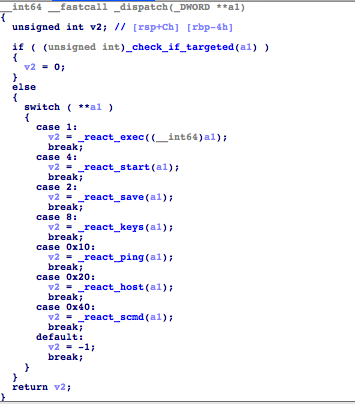
- MALWARE USED RUNONLY AVOID DETECTION FIVE SOFTWARE
- MALWARE USED RUNONLY AVOID DETECTION FIVE CODE
- MALWARE USED RUNONLY AVOID DETECTION FIVE DOWNLOAD
MALWARE USED RUNONLY AVOID DETECTION FIVE SOFTWARE
“As we all know, if software is used to make it, then software can be used to break it, and there’s no shortage of people willing to try to get their hands on free cash, which of course can and will be used to fund other criminal activities. Financial organizations will need to look not only at the hardware used to dispense cash, but also the security of the software sat on it,” he told Infosecurity. “Because most ATMs are just computers these days they are of course subject to the same vulnerabilities or exploits that can affect us all. So far attacks have only been spotted in Mexico, although the vendor argued it’s “only a matter of time” before the same techniques are seen in ATM malware campaigns worldwide.ĮSET security specialist, Mark James, argued that ATM malware is getting more sophisticated and widespread, despite the risk of getting caught.

It also follows other ATM malware in using the widely adopted XFS middleware to interact with the pinpad and cash dispenser, Proofpoint said. GreenDispenser can only be installed on an ATM with physical access, which could indicate that security staff or other banking personnel have colluded with the hackers. In addition, GreenDispenser has the capability to perform a deep delete after the heist to prevent forensic analysis and IR investigations.” This feature ensures that only an authorized individual has the ability to perform the heist. We suspect that the attacker has an application that can run on a mobile phone with functionality to scan the barcode and derive the second PIN - a two-factor authentication of sorts.
MALWARE USED RUNONLY AVOID DETECTION FIVE CODE
“The attacker derives this second PIN from a QR code displayed on the screen of the infected ATM.

It then features a second dynamic PIN unique to each run of the malware. The malware is also designed to require a static hardcoded PIN to authenticate the attacker. It’s coded to run only if the date is earlier than September 2015, “suggesting that GreenDispenser was employed in a limited operation and designed to deactivate itself to avoid detection.” has been in the wild since at least 2015.
MALWARE USED RUNONLY AVOID DETECTION FIVE DOWNLOAD
Yet analyzing it is difficult because it embeds a run-only AppleScript into another script and uses URLs in public web pages to download the actual payloads. GreenDispenser is similar to the Padpin trojan discovered a couple of years ago, but with a few key differences, according to security vendor Proofpoint. Malware years used runonly avoid five code Run-only AppleScript makes decompiling them into source code a tall order. Named OSAMiner, the malware has been distributed in the wild since at least 2015 disguised in pirated (cracked) games and software such as League of Legends and Microsoft Office for Mac, security firm SentinelOne said in a report published this week.įor more than five years, macOS users have been the targets of a sneaky malware operation that used a clever trick to avoid detection and hijacked the hardware resources of infected users to mine cryptocurrency behind their backs.Security researchers are warning of a new strain of ATM malware designed to allow hackers to completely drain a cash point of money and leave virtually no trace of how they did it. “OSAMiner has been active for a long time and has evolved in recent months,” a SentinelOne spokesperson told ZDNet in an email interview on Monday. “From what data we have it appears to be mostly targeted at Chineses/Asia-Pacific communities,” the spokesperson added. Nested run-only AppleScripts, for the win!īut the cryptominer did not go entirely unnoticed. SentinelOne said that two Chinese security firms spotted and analyzed older versions of the OSAMiner in August and September 2018, respectively.īut their reports only scratched the surface of what OSAMiner was capable of, SentinelOne macOS malware researcher Phil Stokes said yesterday. The primary reason was that security researchers weren’t able to retrieve the malware’s entire code at the time, which used nested run-only AppleScript files to retrieve its malicious code across different stages.Īs users installed the pirated software, the boobytrapped installers would download and run a run-only AppleScript, which would download and run a second run-only AppleScript, and then another final third run-only AppleScript.


Since “run-only” AppleScript come in a compiled state where the source code isn’t human-readable, this made analysis harder for security researchers. #Years used runonly applescripts detection for code# Yesterday, Stokes published the full-chain of this attack, along with indicators of compromise (IOCs) of past and newer OSAMiner campaigns. Stokes and the SentinelOne team hope that by finally cracking the mystery surrounding this campaign and by publishing IOCs, other macOS security software providers would now be able to detect OSAMiner attacks and help protect macOS users. #Years used runonly applescripts detection for code#.#Years used runonly applescripts detection for software#.


 0 kommentar(er)
0 kommentar(er)
